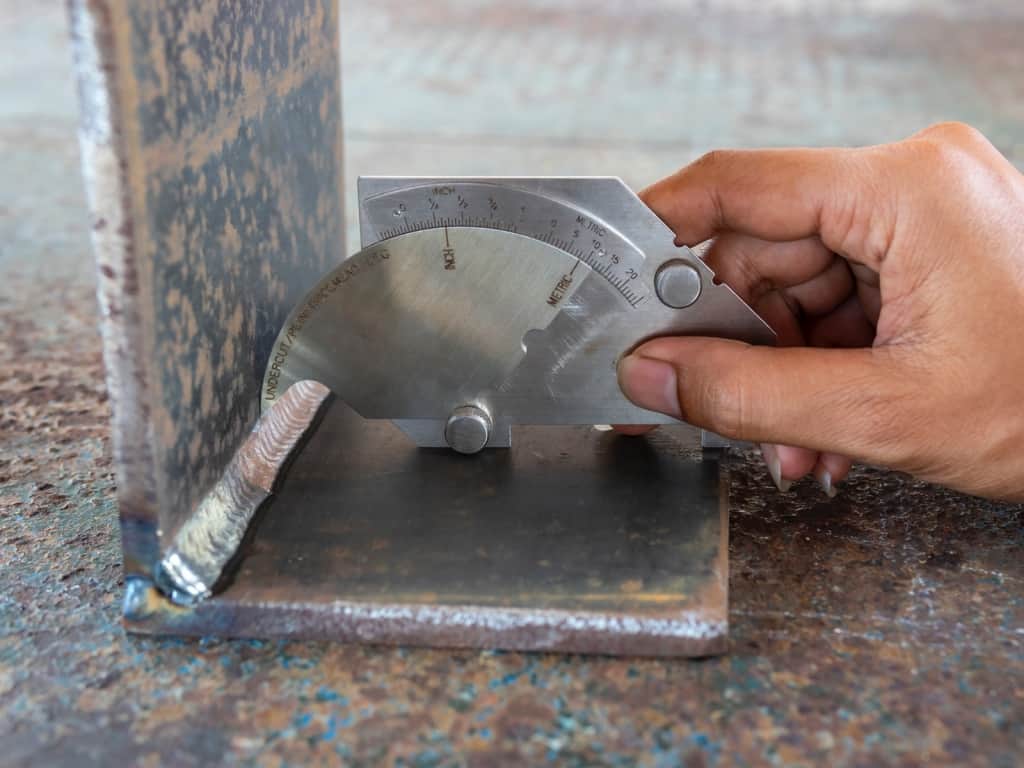Recognizing the Causes and Solutions for Undercut Welding in Steel Manufacture Procedures
In the realm of metal construction procedures, the event of undercut welding positions a significant difficulty that demands a detailed understanding of its reasons and practical services. The elaborate interplay of various elements throughout welding procedures can bring about this unwanted sensation, impacting the architectural integrity and general top quality of the welded joints - Preventing weld undercut. By dissecting the source of undercut welding and exploring efficient therapeutic measures, makers can elevate the requirement of their craftsmanship and ensure the production of perfect metal elements
Usual Reasons For Undercut Welding
Regularly forgotten in steel construction, undercut welding takes place due to different aspects that require thorough interest and experience to be efficiently alleviated. In addition, incorrect welding methods, such as making use of the wrong welding angle or take a trip speed, can also add to undercut development. The option of welding criteria, such as voltage, current, and cable feed rate, plays a substantial function in the incident of undercut welding.
Impact of Incorrect Welding Parameters
Unreliable welding specifications can significantly endanger the integrity and quality of bonded joints in metal fabrication processes. The impact of incorrect welding specifications shows up in different methods, bring about architectural weak points and flaws in the welded components. One vital aspect affected by improper welding criteria is the infiltration deepness of the weld. Not enough warm input because of low welding currents or exceedingly high traveling speeds can result in poor blend between the base steels, bring about insufficient joint penetration and weakened bonds. Alternatively, extreme warm input triggered by high welding currents or slow-moving travel speeds can bring about burn-through and extreme reinforcement, creating a weak and unsteady weld structure. Furthermore, wrong criteria such as incorrect voltage settings or wrong electrode angles can add to erratic weld bead accounts, lack of blend, and enhanced opportunities of issues like damaging. Thorough interest to welding parameters is paramount to make certain the production of top notch welds with the preferred mechanical properties and architectural honesty.
Effect of Improper Torch Angle
Inappropriate lantern angle in welding procedures can substantially affect the high quality and stability of the final weld joints in steel manufacture procedures. Undercutting is a typical welding issue where a groove creates along the weld toe, deteriorating the joint and jeopardizing its structural integrity.
A torch angle that is also steep can bring about not enough infiltration, insufficient combination, and enhanced spatter. On the various other hand, a torch angle that is too superficial can cause extreme penetration, burn-through, and distortion of the base product. Preventing weld undercut. Correct lantern angle is vital for making sure constant weld quality, toughness, and appearance
To avoid damaging and various other problems caused by incorrect lantern angles, welders must be educated to maintain the proper torch angle throughout the welding process. Routine monitoring and modification of lantern angles during welding can assist accomplish sound welds with minimal defects.
Duty of Inadequate Welding Techniques

An additional element of insufficient welding techniques is incorrect weld prep work. Inadequate cleansing of the base steels, wrong joint style, or insufficient edge preparation can all contribute to damage welding. Insufficient securing gas coverage or making use of the wrong type of gas can result in insufficient fusion and the development of undercut flaws.
To resolve the function of insufficient welding methods in steel fabrication procedures, it is necessary to provide extensive training for welders. Appropriate education on welding specifications, joint preparation, and shielding gas option can aid protect against undercut welding and make certain high-quality welds in metal manufacture jobs.
Reliable Solutions for Undercut Welding
Addressing undercut welding in steel manufacture calls for carrying out effective remedies to enhance weld high quality and structural integrity. One of the primary solutions to battle undercut is to adjust welding criteria such as voltage, present, and travel speed to make certain proper more info here heat input and combination. By fine-tuning these settings, welders can protect against excessive melting of the my blog base steel and filler product, lowering the likelihood of undercut formation.
In addition, proper joint prep work is essential in stopping undercut. Making certain tidy base metal surfaces devoid of pollutants and utilizing the proper bevel angle can help advertise much better weld penetration and reduce the risk of undercut - Preventing weld undercut. Utilizing appropriate welding methods, such as oscillating the lantern or weaving, can also assist in dispersing warm evenly and filling up the weld joint sufficiently, reducing the possibility of undercut issues
Additionally, picking the appropriate welding consumables, including electrodes and filler metals, is vital in alleviating undercut. Using materials with proper chemical compositions and mechanical residential properties can add to accomplishing sound welds with minimal undercut. Routine examination and high quality control steps ought to also be executed to discover and deal with undercut problems immediately, making certain the total honesty of produced metal elements.

Final Thought
Finally, comprehending the causes and services for undercut welding in metal fabrication processes is crucial for achieving high-quality welds. By dealing with common causes such as wrong welding criteria, incorrect torch angle, and inadequate welding strategies, welders can protect against damaging and make certain solid, long lasting welds. It is necessary to take notice of these factors and apply reliable services to improve the total welding procedure and end product high quality.
